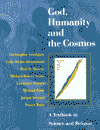The Rise of CopernicanismAristotle had placed the Earth at the
centre of the universe, not because it was the most important place, but
because it was the coldest, most impure place in the cosmos and it would therefore
fall as far as it could - to the centre. The celestial bodies were made out of
a very pure and perfect element and travelled on the surface of spheres, the
most perfect geometric shape. The mediaeval Church adopted this system, and for Christians the Earth was central as being of the place of the cosmos’ salvation. Not surprisingly astronomical observation of the planets fitted only erratically with this Earth-centred (geocentric) scheme and complicated explanations were devised to overcome these anomalies. These were refinements on Ptolemy’s system (2nd Century CE). In the 1530s the Polish mathematician Nicolaus Copernicus began to challenge the Ptolemaic model and suggest a sun-centred (heliocentric) model; this was only published as Copernicus was dying (in his great book De Revolutionibus of 1543). There followed a period of what T.S.Kuhn
has called ‘paradigm shift,’ a crisis in the (newly developing) scientific
community, in which two radically different models were in competition. A key element in the crisis between heliocentrism and geocentrism was the career of Galileo Galilei.
Email
link | Feedback | Contributed by: Dr.
Christopher Southgate |





